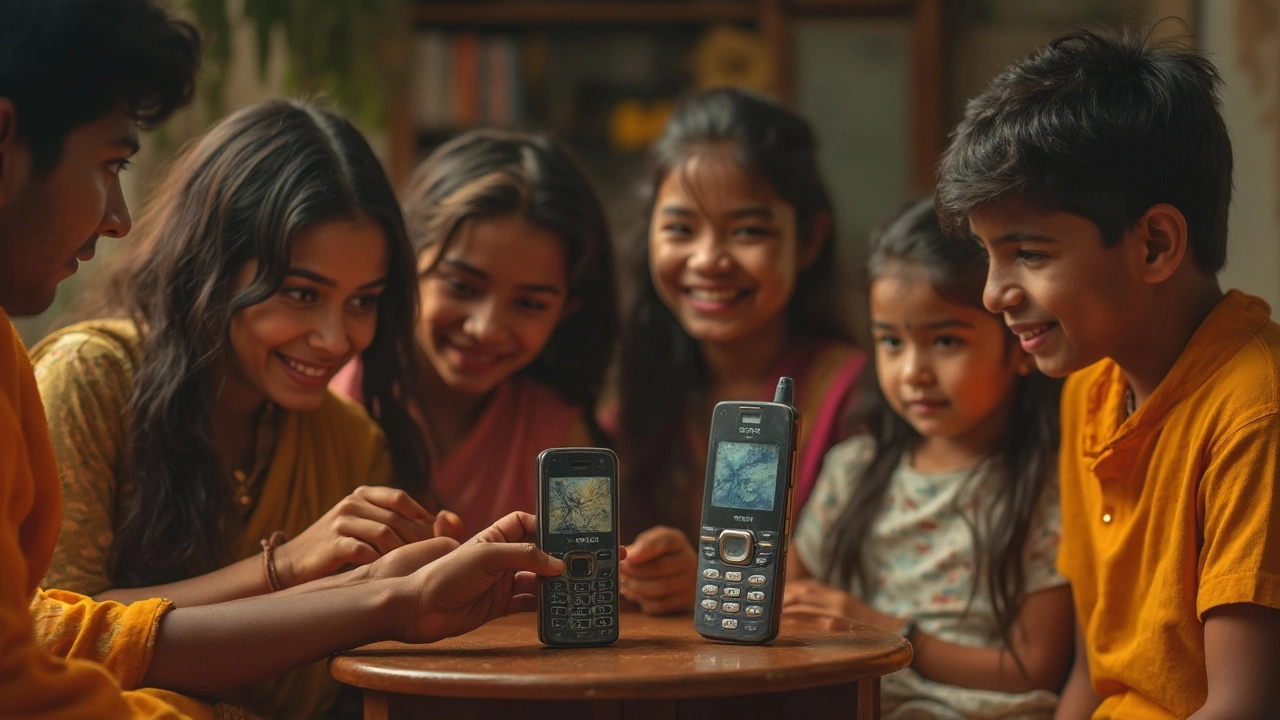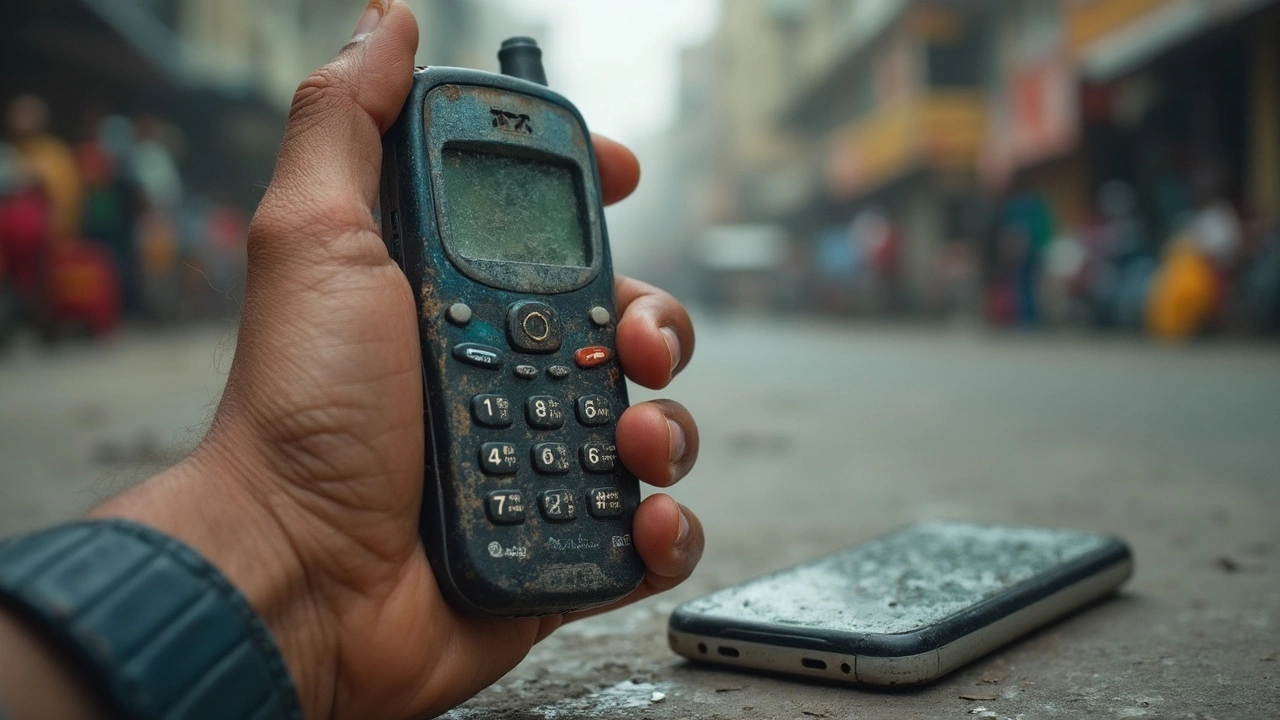
Ever noticed how those chunky old Nokias just refuse to quit, even after a decade buried in your junk drawer? Your latest smartphone, meanwhile, might not make it through a night without the charger, let alone survive a hard fall. There’s a sort of legend status around old mobile phones. They’re the zombies of the tech graveyard—never fully dead, seemingly immune to what wipes out newer models. Why is it that so many people can pull out an old brick, dust it off, and watch it spring to life, while newer phones can barely take a sneeze? There’s more to this stubborn resilience than just nostalgia or some quirky bit of luck.
Classic Brick: Built for Survival
Back in the early days of mobile phones, designers weren’t worried about razor-thin glass or edge-to-edge screens. Instead, they doubled down on durability. The Nokia 3310—launched in 2000—became infamous for surviving drops, puddles, and sometimes even being run over by a car. Materials played a huge role. Old phones were built with dense, impact-resistant plastics and sturdy internal frames designed to take a beating. Modern phones chase minimalism and lightweight elegance; the glass-and-metal sandwich might look sleek, but it’s vulnerable.
And don’t forget batteries. Early phones used removable nickel metal hydride (NiMH) and later lithium-ion batteries. Removable batteries meant that if your battery wore out, you just swapped in a new one—no sacrificing the whole phone, no emergency trips to the repair shop. Now, batteries are glued in and require special tools to replace, making repairs less tempting for regular folks.
A simple design meant fewer things could go wrong. With basic keypad interfaces and monochrome screens, there just weren’t many fragile components. No touchscreens, no complex sensors, no delicate circuitry jammed into an impossibly thin profile. Many old phones don’t even have software that needs constant updates—meaning they dodge the headaches of digital decay and planned obsolescence that modern smartphone users face.
There’s a story that did the rounds at the repair shops here in Brighton not long ago—a Nokia resurrected after years in a damp garage. The owner dried it off, snapped in a fresh battery, and it instantly powered on with its classic startup jingle. That’s not unusual: old phones were built to endure users who didn’t baby their tech.
No Updates, No Problems: The Software Advantage
Modern gadgets rely on software that evolves at breakneck speed. Every few months brings a new feature, a bug fix, or a security patch. But all that updating piles extra weight on hardware that sometimes can’t keep up. Eventually, your fancy new smartphone starts feeling sluggish, or—you guessed it—the manufacturer just stops sending updates. Now it’s left vulnerable or incompatible with your apps. That’s part of why phones feel obsolete after two or three years, even if the hardware is physically fine.
Old mobile phones? They don’t play this game. The “operating system” on a classic phone is barely more complex than a digital watch. It’s not chatting with a hundred apps or your smart kettle. This simplicity is a hidden superpower. Without software bloat or system updates, there’s nothing to slow them down. If you find a Motorola from the late ’90s in your attic, it’ll still dial numbers just fine. You’re not asked to update, reset, or even sign in.
Display technology helps here, too. Those early screens were small, robust, and required little power—no risk of OLED burn-in or dead pixels spreading across a $900 panel. With fewer software demands and rugged displays, old phones just keep doing what they were designed to do.
Want the numbers to back it up? Take a look at this comparison of support lifespan and hardware longevity between classic and modern phones:
| Device Era | Average Software Support | Battery Replacement | Common Failure Point |
|---|---|---|---|
| Classic (1995-2005) | Not needed | Removable, replaceable | Battery or keypad wear |
| Smartphones (2015-2025) | 2-4 years | Sealed, difficult | Battery, screen damage, or software lag |
That big gap in support? It lets old phones keep going, while new ones are ushered to the recycling pile by software expiry—not physical failure. It’s digital planned obsolescence at work.

Battery Life Back Then vs. Now
You probably remember charging your old phone maybe once a week. Now, making your modern smartphone last a whole day is a win. It’s not just battery capacity—though those brick phones often packed less energy than today’s slabs. The real difference is what the tech inside was doing.
Old phones didn’t have giant color screens, constant background processes, social media push notifications, or GPS running drainage operations 24/7. Their operating systems were lean, and there wasn’t much to distract your battery. You could talk, text, set an alarm, and be done. Modern devices, even in standby, are working on dozens of things—email sync, location tracking, background app refreshes, Bluetooth scanning. Each feature eats into the battery, so even a bigger battery can barely keep pace.
There’s also a bit of planned inefficiency: newer batteries are sealed in with glue and delicate connectors. That makes swapping one out a hassle and nudges people toward buying new phones rather than repairing their old ones. With older mobiles, popping in a new battery was as easy as flipping open the back cover in seconds. No fiddly screws, no heat guns, no risk.
If you’re hoping to nurse a modern phone’s battery, keep some old-school habits in mind:
- Turn off unused features (Bluetooth, GPS, WiFi) when you don’t need them.
- Lower your screen brightness—it’s usually the number one battery eater.
- Close unused apps regularly so they’re not running in the background.
- Keep the phone in the shade. Batteries degrade faster in hot weather—ask anyone who’s left their device in a Brighton beach sunbeam.
- If you notice your battery losing steam, look up a DIY battery replacement kit before tossing your phone. It’s a headache, but still cheaper than a new model.
Old phones ruled battery life because they didn’t ask the battery to do much, and if you needed a new one, it was right there in blister packs at any supermarket checkout.
Simplicity = Reliability: Fewer Things to Break
Here’s a wild fact: the original Nokia 1100 is the best-selling phone of all time, with over 250 million units worldwide. That’s not just impressive for sales; it’s a hint at how indestructible old phones were. These gadgets had real buttons, thick bezels, reinforced glass (if any), and nothing fancy hiding beneath the surface. You could drop them, swim with them (a quick rice bath and they’re good), and toss them in bags without flinching.
The simplicity extended to the insides, too. Modern phones are jam-packed—triple-camera arrays, all-glass bodies, wireless charging coils, fingerprint scanners, face sensors, and more. With every new feature, there’s a new way for things to fail when they take a tumble. Old phones had none of that. No cracked back glass because they didn’t have glass backs. No confusion from complex touch-screen sensors—just plastic and a few easy-to-replace keys.
Modern phones are also harder to repair. Probabilities aren’t on your side if you try opening a new flagship. Tiny screws, glued-in batteries, screens connected by fragile ribbons, and waterproofing gaskets that don’t like being nudged. The "right to repair" movement is growing, but we’re nowhere near the simplicity of those early days. Kitchen-table repairs used to be normal; now, most people don’t even attempt it.
If you’re nostalgic for quick fixes, hunt down old models at car boot sales. Swapping a $2 part can give one of these relics a whole new lease of life. Even today, you’ll find courier drivers, festival-goers, and people working in tough environments sticking with brick phones. They’re not just being stubborn—they just need something that actually survives.

What We Can Learn—and How to Make Your Own Phone Last
The big brands may not listen to every gripe, but consumers are starting to push back. More people want phones built to last, with access to spare parts and software that doesn’t sabotage devices after a few years. If you love your current phone or want to stretch out its lifespan, try these tips:
- Invest in a tough case and shatter-proof screen protector. Old phones survived because they were thick and heavily armored—recreate that effect on your modern phone.
- Resist the urge to upgrade every year. Ask yourself if your device really can’t do the job or if you’re just craving shiny new features.
- Look for phones with replaceable batteries and easy access to parts. Some modern brands (like Fairphone) focus on repair-friendly design.
- Get into the habit of repairing, not replacing. YouTube is full of step-by-step guides for swapping parts or souping up your device.
- Use lightweight software or “lite” versions of apps to keep things snappy and preserve your phone’s hardware.
By treating your phone like it’s meant to last—and not just as a two-year lease—you’re already winning half the battle. And who knows? Maybe in 2035, someone will be showing off their still-functioning Galaxy S20 the way people now boast about their indestructible Nokias.
The next time you see your uncle flip open a battered old Motorola with pride, remember: ancient isn’t always obsolete. Sometimes, it just means better built.